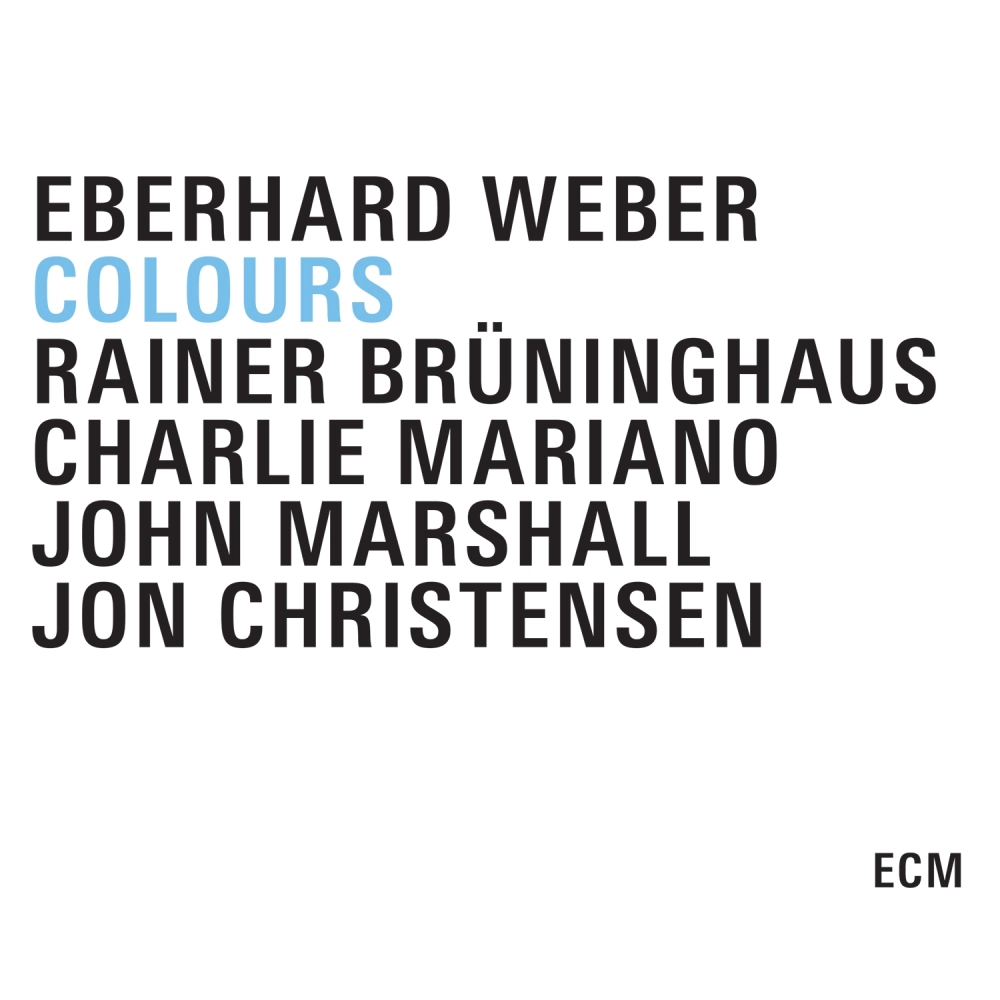Colours
Eberhard Weber, Rainer Brüninghaus, Charlie Mariano, John Marshall, Jon Christensen
- CD 1
- 1Touch
04:59 - 2Sand-Glass
15:31 - 3Yellow Fields
10:04 - 4Left Lane
13:37 - CD 2
- 1Seriously Deep
17:48 - 2Silent Feet
12:11 - 3Eyes That Can See In The Dark
12:20 - CD 3
- 1The Last Stage Of A Long Journey
09:40 - 2Bali
12:24 - 3A Dark Spell
08:22 - 4Little Movements
07:25 - 5'No Trees?' He Said
05:01
This three CD box brings together music recorded for ECM by Eberhard Weber’s band Colours: the albums “Yellow Fields” (1975), “Silent Feet” (1977) and “Little Movements” (1980). Throughout the six years of its existence, Colours was one of the most popular ensembles on the European jazz touring circuit – although Weber has always stressed the group’s conceptual distance from a jazz mainstream. Many idiomatic elements were combined in Colours’ stylistic mix. The group’s sound-world consciously extended the palette proposed by “The Colours of Chloe”, Weber’s prize-winning ECM disc of 1974. As the German bassist explains to writer Michael Tucker in the liner notes, “there were various aspects to the [Chloe] session, from the reflective European or chamber music side of the writing, to some jazz-rock and a kind of pictorial play with minimalism. Eventually, all these aspects would be developed in Colours.”
And not only these: US saxophonist Charlie Mariano had followed his enthusiasm for Indian music to the source and brought the sounds of the nagaswaram and the shehnai into Colours, as well as some of the deeply soulful jazz playing he had demonstrated with Charles Mingus on the classic “The Black Saint and the Sinner Lady.” With gigs and recordings with Stan Kenton, McCoy Tyner and Toshiko Akiyoshi behind him and a reputation as a vital contributor to the new European scene of the post-free period, Mariano was a unique frontline player for Weber’s band. And the leader himself was, of course, one of Colours’ primary soloists and melody players. In the vanguard of the movement to liberate the bass from mere time keeping responsibilities, Weber stepped forward in the 1970s to define and delineate new territory for his customized electrobass. Before “Yellow Fields” (1975) no one else sounded like this – though plenty of electric bassists would try – and Jaco Pastorius’s debut album was still a year away.
In the first version of Colours, Norway’s Jon Christensen was on hand to develop further ideas that he and Weber had first explored in Ralph Towner’s “Solstice” project: “We had something special in the rhythm, a kind of organic multi-layering and contrasts in the accents. So you had a crispness and also a slower, more spacious, offset quality. I used to talk about playing waves, playing across bar divisions. And Eberhard felt it right away.”
When Christensen left Colours in 1977, his place was taken by English drummer John Marshall, a player thoroughly at home in the space between jazz and progressive rock, as his years with the Soft Machine had proven.
Completing the line-up: keyboardist Rainer Brüninghaus, valued by Weber as a jazz musician steeped in European music, and an important collaborator from “The Colours of Chloe” onward. Brüninghaus would eventually follow Weber into the Jan Garbarek Group – the keyboardist remains there to this day (see the recent “Dresden”).
The Colours box is released a few weeks before Eberhard Weber’s 70th birthday in January 2010, and in time for the presentation of the Albert Mangelsdorff Preis – Germany’s biggest jazz award – to Weber for his life’s work. The award ceremony is on November 6 in Berlin, where the laudatio will be given by Manfred Schoof.
You need to load content from reCAPTCHA to submit the form. Please note that doing so will share data with third-party providers.
More InformationYou need to load content from Turnstile to submit the form. Please note that doing so will share data with third-party providers.
More InformationYou are currently viewing a placeholder content from Facebook. To access the actual content, click the button below. Please note that doing so will share data with third-party providers.
More InformationYou are currently viewing a placeholder content from Instagram. To access the actual content, click the button below. Please note that doing so will share data with third-party providers.
More InformationYou are currently viewing a placeholder content from X. To access the actual content, click the button below. Please note that doing so will share data with third-party providers.
More Information



















